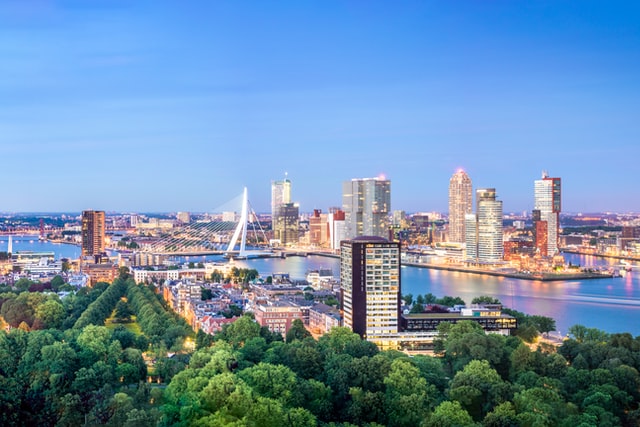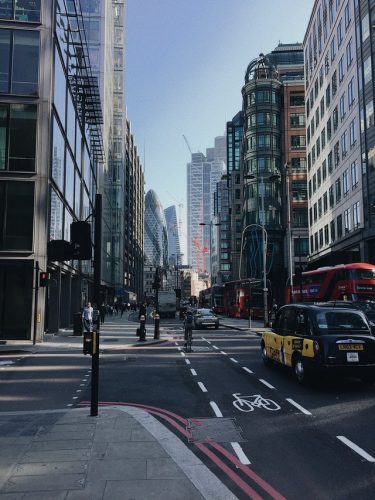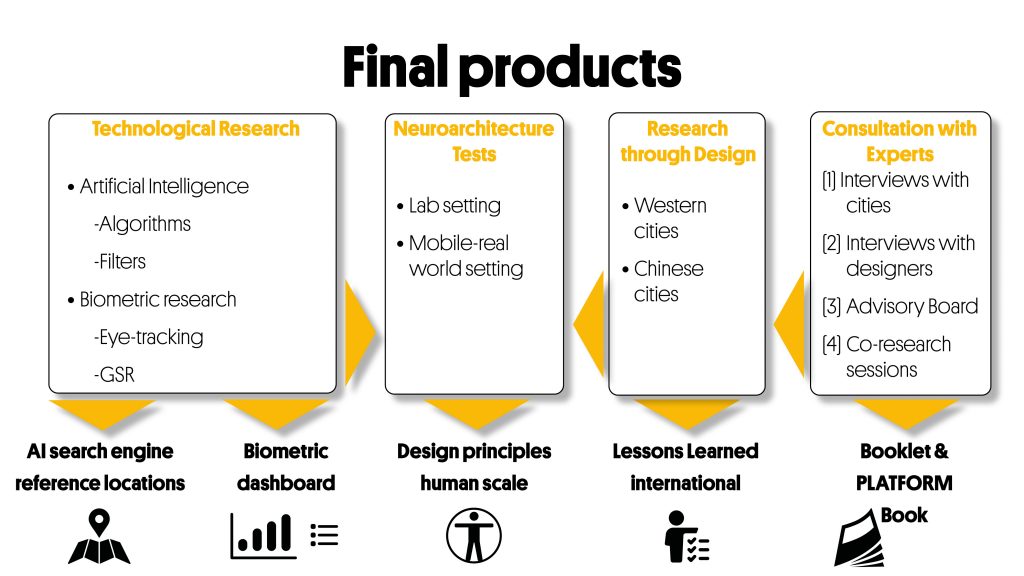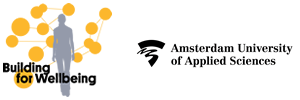Urban Densification
How can we design streetscapes on a human scale in high-density environments to promote human well-being?
Roos Aldershoff Fotografie
The Next Level of Urban Compaction

The urban compaction process is accelerating in most western cities. More inhabitants need to be accommodated within the existing urban fabric of these cities. In the United States, this entails building new condominiums; in Europe, it often means the introduction of taller high-rise buildings. These new urban projects are intended to create a sense of well-being, despite their high density and high rise. These intentions are usually articulated by introducing certain design principles aimed at mitigating or reducing the scale of tall buildings to a manageable human scale at eye level. However, as many of these design principles are derived from traditional urban streetscapes, it remains unclear whether they have the intended effect. The question is: how can we design streetscapes on a human scale in high-density environments? This is the central theme of the research project that situates the subject in the context of the spatial transformation of western cities.
User Perspective at Street Level
Citizens’ daily life of social exchange and interaction take place at street level. This is where the impact of densification and the presence of high-rise development play out. In this respect, it is assumed that streets are vital shared public spaces, shaped and bounded by a three-dimensional configuration of buildings and, in particular, ground floors. Today’s take on urban densification and new (extreme) high-rise require a deeper, eye-level understanding of these new streetscapes. The current paradigm of city-making consists of common design principles derived from traditional design practice.
At street level, for example, facades are often articulated with active ground floors. This ensures a connection between indoors and outdoors for social exchanges and encourages ‘eyes on the street’ for social control (Jane Jacobs 1961). Other examples are vertical and horizontal rhythms in the street facades and ‘skins’ of tactile materials. The assumed impact of these principles in new high-rise environments is best described in empirical studies. Evidence-based studies that might confirm the impact of these principles have until now been scarce.

Sensing Streetscapes Research Lines
A consortium of spatial design firms and client representatives of large-scale projects is conducting action research along three lines. First, building on classic works (e.g., Gordon Cullen (1961), Allan Jacobs (2008), Jane Jacobs (1961), Jan Gehl (2011), Kevin Lynch (1960)), six reference locations for these new environments are deconstructed using a Research through Design (RtD) approach. Second, biometric technology such as eye-tracking is deployed to reveal the visual impact of the applied design principles: What eye patterns are linked to the architecture of the streets? Do these design solutions reduce the impact of the high density? Third, algorithms are developed and applied to build an artificial intelligence engine for tracing the most suitable and inspiring reference locations around the globe for your design work.
The three research lines come together in nine co-research sessions held in collaboration with nine innovative Dutch urban design and (landscape) architecture firms and the Dutch professional association of urban designers.
The goals of our research are threefold. First, to produce more practice-proven knowledge about possible design solutions, thus creating better neighbourhoods. Second, to transfer and translate the applied emerging technologies into spatial design practice. Third, to contribute to the emerging fields of neuroarchitecture and applied artificial intelligence for urban design.

